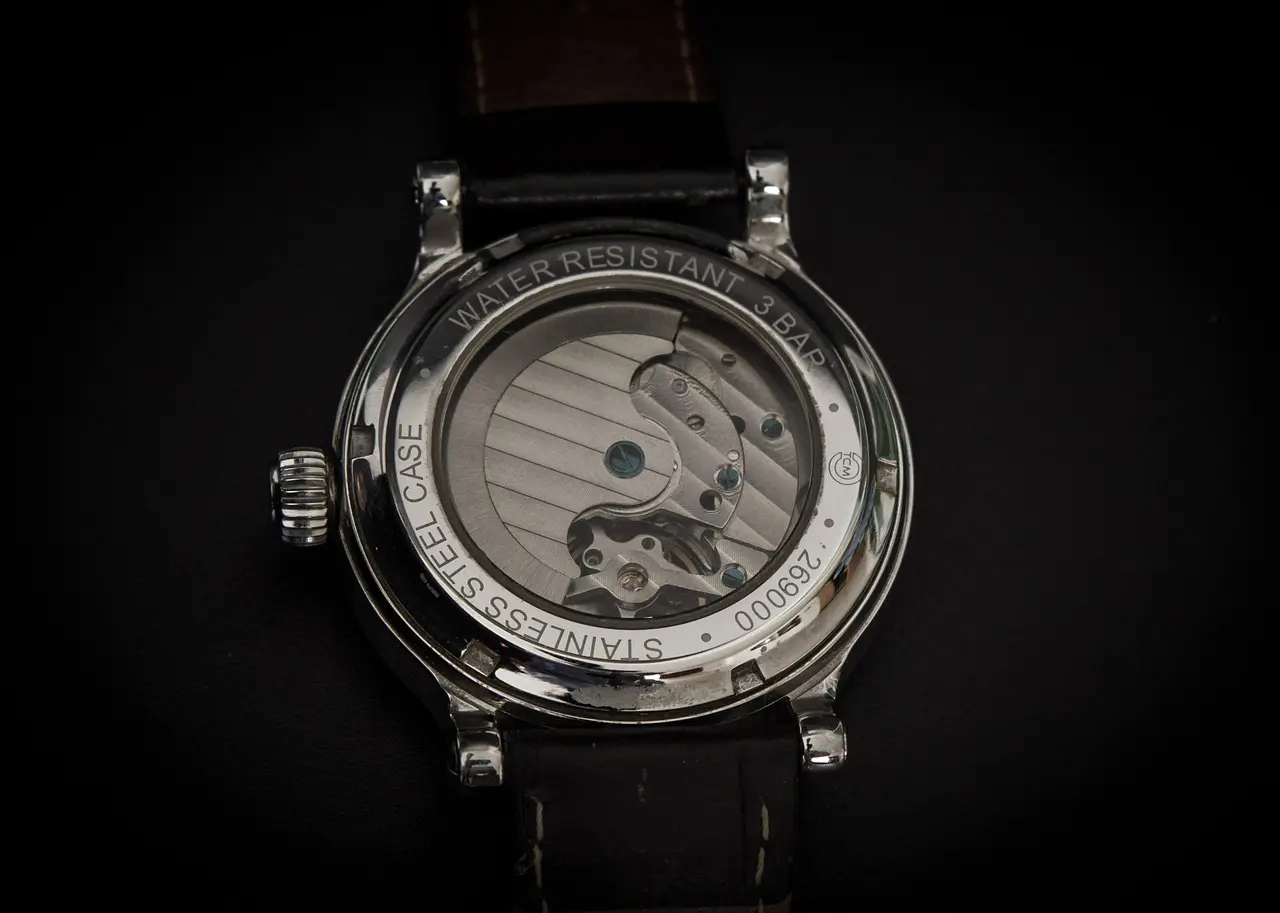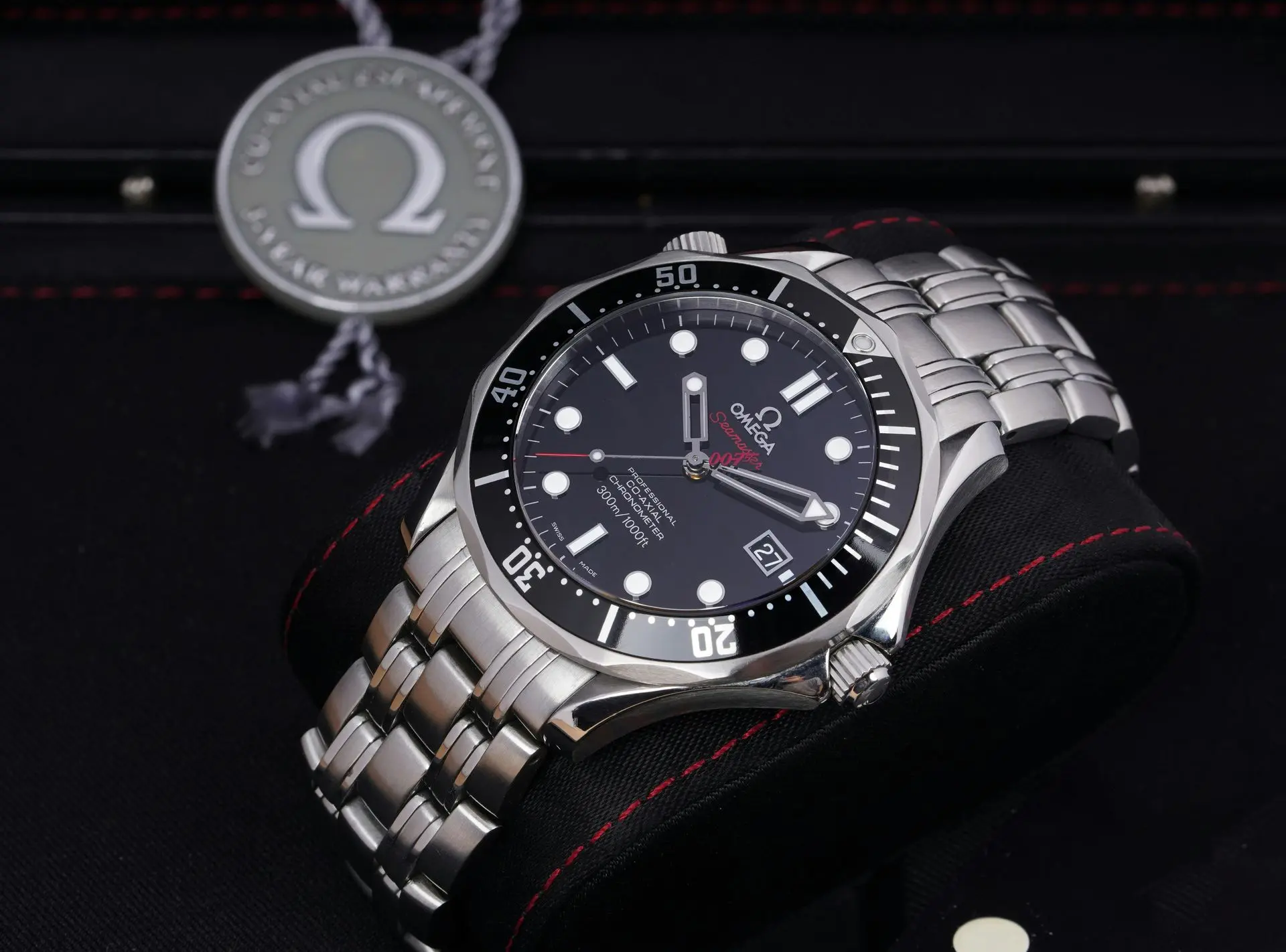Watch water resistance is one of the factors that you should consider when you are buying a watch. It will protect your watch against water damage. This type of protection relies principally on gaskets—small gaskets that prevent the entry of moisture, dust and air inside the watch case.
1. What Is Watch Water Resistance?
Watch water resistance refers to the ability of your watch to prevent water penetration into the inside components of your watch. This does not imply that the watch is totally waterproof. Instead, it is made to withstand some amount of water pressure.
You may have noticed that watch dials would have shown markings such as 30m, 50m, 100m or 200m. These figures represent the amount of pressure the watch can take, not the depth that you can actually dive. An example of this is the 30m watch being able to withstand splashes or rain but not swimming. A 100m watch is okay for swimming, and a 200m watch can be used for diving.
Knowledge of these ratings will aid you in utilizing your watch without going beyond its boundaries. It is important to remember that it is not only factory settings that determine your watch water resistance, but also regular maintenance and the state of gaskets.
2. What Are Watch Gaskets?
Gaskets are small but very important rings prepared out of rubber, silicone, Teflon and nylon. They form a narrow gap between various components of the watch which include the case back, crown, crystal and pushers. It is their duty not to allow water, air and dust into the delicate internal system of the watch.
You may consider a gasket as the invisible shield to your watch. In the absence of these seals, even the best watch water resistance ratings would not last long. In the long run, these gaskets may die out because of the pressure, sweat, and change of temperature hence the need to check them regularly.
3. How Gaskets Work in a Watch
Gaskets are used to act as a shield between the watch holes and the surrounding atmosphere. As the watch is assembled, it is always joined by compressing every gasket between two surfaces, making it airtight and waterproof.
A slight bending of the gasket takes place when it is under pressure, such as when swimming or diving, to ensure water does not get in. To ensure that the gasket remains soft and pliable, silicone grease is usually applied to the gasket. A dry gasket may crack or lose its elasticity, and the water resistance of the watch decreases. That is why regular lubrication is essential, like replacement.
In simple terms, a gasket enables the watch to breathe safely without exposing it to water but still keeps it apart from the movement inside the watch.
4. Why a Watch’s Water Resistance Depends on Gaskets
A watch's water resistance lies in the quality of the gaskets to perform their duty. The seal is ruined in case one of the gaskets is worn, cracked, or dry. Water will then creep into the case and ruin the movement, dial, or hands.
Gaskets are known to deteriorate with time. The material may be hardened or contracted by heat, sunshine, sweat, or chemicals. Any slight crack can give way to the moisture. So a new watch that has perfect seals will not be affected by water easily, but an old one can easily leak when one dips it in water.
You must maintain your gaskets in proper condition, and therefore, have them checked periodically and replaced where necessary to maintain the water resistance of your watch.
5. Watch Gasket types and their functions in various watches
5.1 Case Back Gasket
The rear section of your watch is populated by the case back gasket. It avoids the possibility of water penetrating through the back cover. Such a gasket is important since it protects the most delicate components within. The screw-down casebacks tend to provide more watch waterproofing since the pressure closes the gasket.
5.2 Crown Gasket
The crown is also among the weakest points of any watch. The crown gasket is a rubber ring that is tight around the stem to prevent the entry of water when changing the time or date. When your watch has a screw-down crown, it provides additional security. In case of locking the crown, the gasket is pushed into its position, which provides greater resistance to the water of the watch.
5.3 Crystal Gasket
The crystal gasket is placed between the watch glass and the case. It is what prevents leakage of water through the top face. When in a high pressure environment such as when underwater diving, the crystal gasket should be able to resist abrupt alterations in pressure. Once it is weak or misaligned, fogging or condensation might be experienced in your watch.
5.4 Pusher Gasket (for Chronographs)
Chronograph watches are planned to be equipped with pushers that begin or stop timers. Special gaskets are required to prevent water from entering these pushers. A little ring placed over the opening of each pusher closes it up when it is not in use.
The seal may be broken by pressing underwater with the pusher, lessening water resistance in watches. This is the reason why you must never use the chronograph buttons when they are underwater.
6. How Often Should Gaskets Be Replaced?
Your watch may not seem to have gaskets but then again the gaskets are on the inside. They should be checked after every one to two years, particularly when you wear your watch on a daily basis or when it regularly comes into contact with water.
When you see the glass under the glass fogging or condensing or around the crown, it could be an indication that you have a broken gasket. A watch water resistance can only be ensured by replacing a gasket, which is an easy job done by a professional. Even a small leak will ruin a movement worth hundreds of dollars.
To avoid leakages, a certified watch technician should always test and replace gaskets with the appropriate tools and pressure-testing machines.
7. Tips to Maintain Watch Water Resistance
Maintaining your watch water resistance is not a hard task. There are a couple of easy actions that would make your watch last longer and be safeguarded.
- Do not open the case yourself. Even the smallest dust or a carelessly closed back cover may destroy the grip of the gasket.
- Wash your watch after swimming. Rubber seals may be damaged by saltwater and chlorine.
- Do not be fussy with the crown. It is always important to lock before diving or swimming.
- Have water-resistance tests on a regular basis. The presence of leaks can easily be detected by a rapid test conducted in the watch shop before they damage it.
- Keep your watch in a cool, dry place. Gaskets may be made hard with heat and humidity.
These steps will ensure that the waterproofing of your watch lasts several years.
8. Common Myths About Watch Water Resistance
One can identify a number of misconceptions regarding water resistance. Let's clear up a few of them:
Myth 1: Waterproof is water-resistant.
None of the watches is entirely waterproof. Water-resistant means it is able to withstand a specific amount of pressure.
Myth 2: A 30m rating implies that you are able to dive 30 meters.
Not true. Its 30m watch is just splash-proof. Physical swimming must have a minimum of 100m of resistance.
Myth 3: Waterproofing is permanent.
Gaskets deteriorate with time, and it is necessary to conduct regular inspections to ensure your watch is safe.
Myth 4: It is possible to press underwater buttons.
This is a seal-busted, water-in—even with a deep-rated watch.
These facts will allow you to save your investment and maintain the water resistance of your watch.
9. Professional Water Resistance Testing
After replacing its gaskets, or one year after having the watch professionally checked, have your watch professionally tested. Tests are of two common forms:
- Dry Testing: Is a test that is performed with the use of air pressure to test whether the watch case will expand slightly under pressure.
- Wet Testing: The watch is put into water where it is pressurized to make sure that no bubbles escape.
The technician also examines your gaskets in these tests in terms of cracks, dryness, or improper alignment. These minor details will dictate the level of water resistance of your watch in the real world.
Final Thoughts
The resistance of a watch to water entirely relies on the gaskets of the watch. These mini seals are significant in ensuring that your timepiece is not destroyed. To retain their watch water resistance, it is important that they are kept flexible and intact.
We are concerned about your watches, how they will be safe and last longer at Leitzeit. We advise that you have your gaskets replaced by professionals and that you test your watch regularly so as to ensure that it remains strong and durable. Visit our professional watch services to ensure that your watch is staying on time, rain or shine.
Top 5 Trending FAQs About Watch Water Resistance
Can I shower with a water-resistant watch?
It's not recommended. Gaskets could be weakened by hot water, soap, and steam and decrease watch water resistance. Saunas and showers are also not good.
How often should I get my watch water resistance tested?
Once every 12 months is ideal. Test it after every 6 months in case you often swim or dive.
What affects the lifespan of gaskets?
Exposure to heat, sunlight, chemicals, and saltwater reduces the life of gaskets. It is prolonged through regular cleaning and maintenance.
Can I replace the gasket myself?
You shouldn't. Professional instruments are required to maintain tight seals and the waterproofing of the watch. An amateur project will break your watch very easily.
Does battery replacement affect water resistance?
Yes, the case may distort the gasket seal on opening. Every time a battery is changed, always demand a test of water resistance.